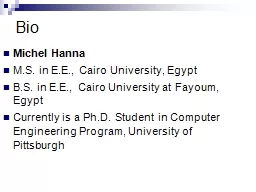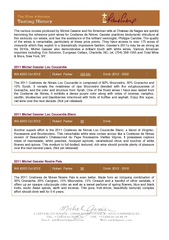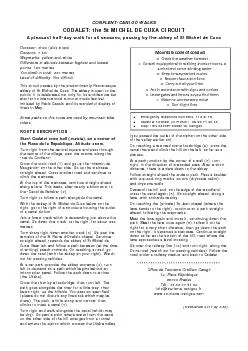PPT-Bio Michel Hanna
Author : alida-meadow | Published Date : 2016-03-01
MS in EE Cairo University Egypt BS in EE Cairo University at Fayoum Egypt Currently is a PhD Student in Computer Engineering Program University of Pittsburgh CHAP
Presentation Embed Code
Download Presentation
Download Presentation The PPT/PDF document "Bio Michel Hanna" is the property of its rightful owner. Permission is granted to download and print the materials on this website for personal, non-commercial use only, and to display it on your personal computer provided you do not modify the materials and that you retain all copyright notices contained in the materials. By downloading content from our website, you accept the terms of this agreement.
Bio Michel Hanna: Transcript
Download Rules Of Document
"Bio Michel Hanna"The content belongs to its owner. You may download and print it for personal use, without modification, and keep all copyright notices. By downloading, you agree to these terms.
Related Documents














